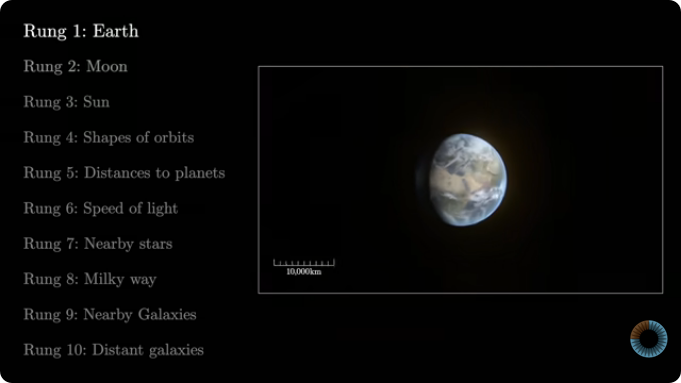- In Genesis 28, Jacob sees a ladder rooted in the earth and reaching to heaven—a symbolic picture of connection, communication, and divine presence:
10 Jacob left Beersheba and set out for Harran. 11 When he reached a certain place, he stopped for the night because the sun had set. Taking one of the stones there, he put it under his head and lay down to sleep. 12 He had a dream in which he saw a stairway resting on the earth, with its top reaching to heaven, and the angels of God were ascending and descending on it. 13 There above it stood the Lord, . . . . 16 When Jacob awoke from his sleep, he thought, “Surely the Lord is in this place, and I was not aware of it.” 17 He was afraid and said, “How awesome is this place! This is none other than the house of God; this is the gate of heaven.”
- By contrast, Terence Tao and Tanya Klowden describe the cosmic distance ladder: the brilliant sequence of empirical steps—from Eratosthenes’s well to Kepler’s orbits to parallax to redshift—that lets us measure the universe.
- Terence Tao on the cosmic distance ladder
- Terence Tao continuing history’s cleverest cosmological measurements
- Climbing the cosmic distance ladder
Is it more fruitful to see the biblical ladder as a symbolic framework, and the scientific cosmic distance ladder as an empirical framework, rather than forcing them to describe the same kind of thing?
